
| Marbled Footman (one synonym : Anestia inquinata TP Lucas) LITHOSIINI, ARCTIINAE, EREBIDAE, NOCTUOIDEA | (donherbisonevans@yahoo.com) and Stella Crossley |
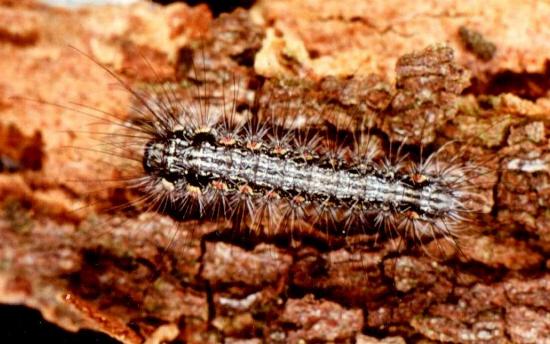
(Photo: courtesy of Merlin Crossley, Melbourne, Victoria)

| Marbled Footman (one synonym : Anestia inquinata TP Lucas) LITHOSIINI, ARCTIINAE, EREBIDAE, NOCTUOIDEA | (donherbisonevans@yahoo.com) and Stella Crossley |

(Photo: courtesy of Merlin Crossley, Melbourne, Victoria)
We found eggs of this species on the trunk of a small Bottlebrush ( Callistemon, MYRTACEAE ). When the Caterpillars hatched, they refused to eat a wide variety of leaves offered. They were reared to adults on wet bark coated with
although they are thought also to feed on Algae such as
The caterpillars are grey and black, with orange or pink verrucae along each side, and yellow speckles on its back and underside. Also two white lines run along the back. The caterpillars have long fine hairs which project to the front, to the rear, and sideways. They grew to a length of about 1.5 cms.
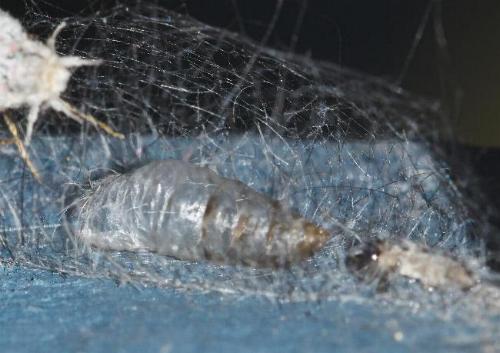
They each formed a pupa inside a net-like cocoon made of silk and larval hairs, attached to the bark.
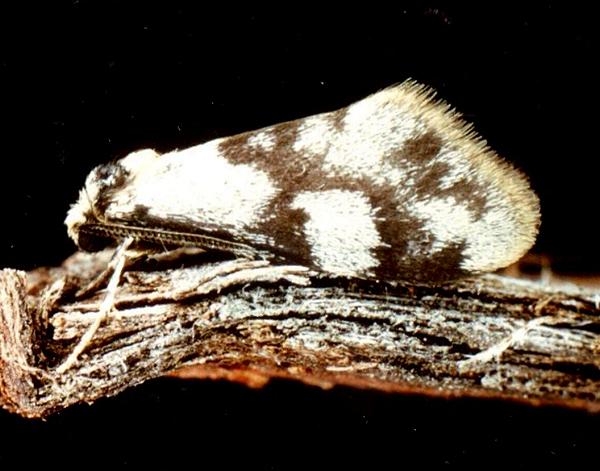
The adult male moth has a pattern of light and dark grey on the forewings. The pattern is very varaiable. Pale specimens have nearly white forewings with a sparse network of dark lines. Dark specimens have nearly black forewings with a few white spots. The hindwings are less variable, and usually orange with a black apical patch, and with a black border that does not extend as far as the tornus. The wingspan of the males is about 1.5 cms.
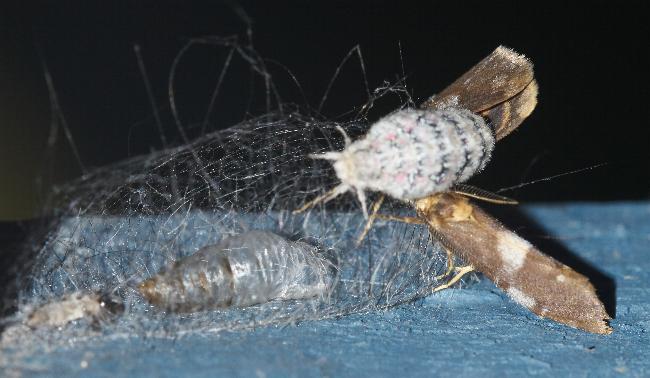
The adult female has a length of about 1 cm. She has vestigial wings and cannot fly, and has a brown hairy body with mauve bands. The female stays near her cocoon, and the male copulates with her there. The eggs are laid on the cocoon.
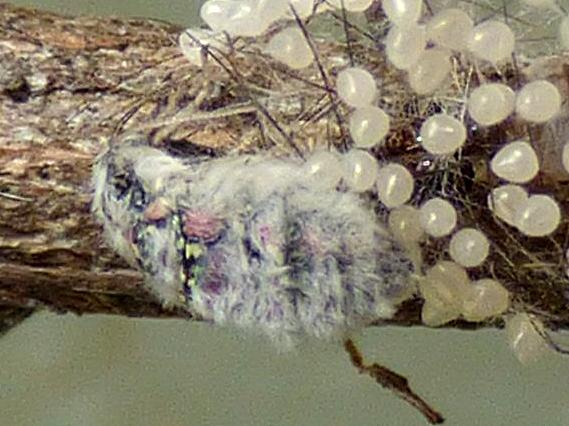
The species has been found in
There is a suspicion that this is the same species as Anestia ombrophanes Meyrick 1886, as both Butler and Meyrick published nearly simultaneously in different journals, and probably had no idea what the other was publishing.
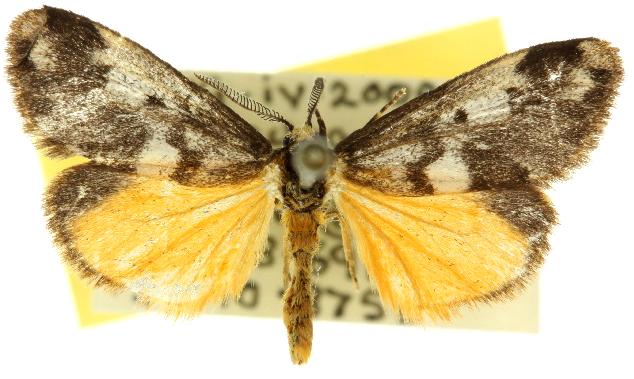
Further reading :
Arthur G. Butler,
Descriptions of 21 new genera and 103 new species of Lepidoptera Heterocera from the Australian region,
Transactions of the Entomological Society of London,
1886, Part 4, p. 384, No. 4.
Ian F.B. Common,
Moths of Australia,
Melbourne University Press, 1990, pl. 18.9, p. 437.
Peter Marriott,
Moths of Victoria - Part 2,
Tiger Moths and Allies - NOCTUOIDEA (A),
Entomological Society of Victoria, 2009, pp. 22-23.
 caterpillar |  butterflies |  Lepidoptera |  moths |  caterpillar |
(updated 2 February 2010, 5 October 2025)